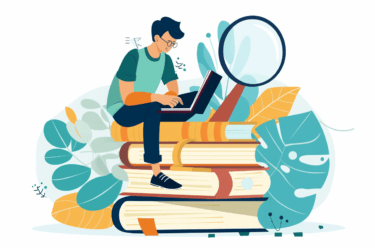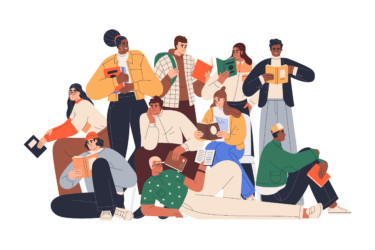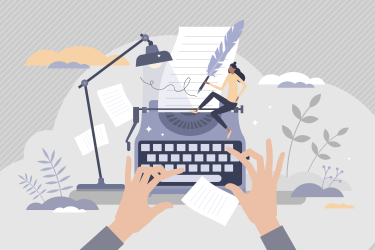We are the summary of everything we have learned, heard, and read through our lives. That is why, to some extent, repeating someone’s thoughts is unavoidable. The subtle border lies in the place of analysis and forming our individual beliefs, which distinguishes reflection from plagiarism.
To avoid unintended copying or even self-plagiarism, when we accidentally repeat our old writing, it is helpful to compare two papers for plagiarism.
PlagiarismCheck.org allows searching for similarities between two documents: you can compare the paper to any of the earlier submitted documents and see the detailed comparison of your paper to the source where the similarities have been detected.
Here is an example of unveiling self-plagiarism and the students copying the works from each other. It happens that the plagiarism checker does not indicate any matches with Internet sources. However, we see the similarities between the paper and the document that has been submitted earlier. You can press “Compare” to see the similarities between the texts.
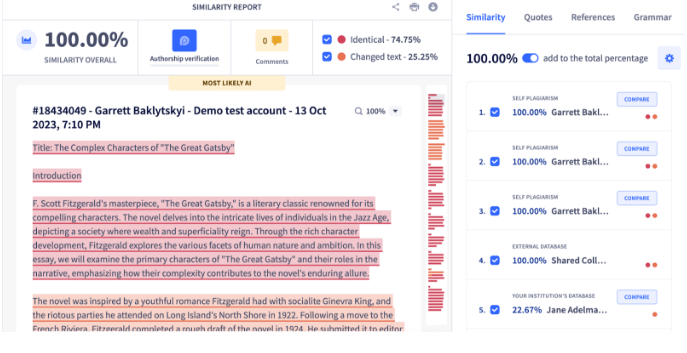
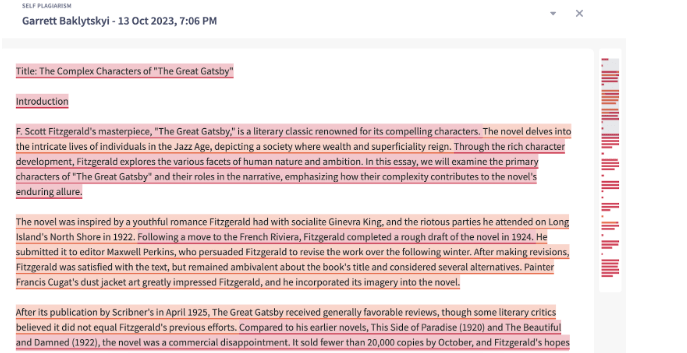
Through the 2 papers similarity analysis, teachers, students, and content makers can clearly see the matching parts of the texts and detect alleged plagiarism, protecting originality and honesty.
- Compare your work to older writing to avoid self-plagiarism.
- Check the quality of your research-based paper by comparing it to the source. Often, paraphrasing and finding synonyms for the words is not enough to ensure the text’s originality.
- Catch the cases when students copy from each other by finding similarities in their papers.
What is more, PlagiarismCheck.org efficiently catches similarities in any text, comparing it to specific databases and the whole Internet. The tool can also verify the text’s authorship and trace ChatGPT and other AI-generators.
Detect plagiarism and AI-generated content quickly and conveniently. Try it for free now!


